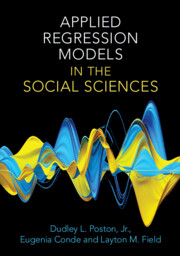966 results
P.142 The use of intraoperative magnetic resonance imaging for endoscopic transnasal transsphenoid surgery in children
-
- Journal:
- Canadian Journal of Neurological Sciences / Volume 51 / Issue s1 / June 2024
- Published online by Cambridge University Press:
- 24 May 2024, p. S55
-
- Article
-
- You have access
- Export citation
Areas of hope: ensuring the conservation of future values of nature
-
- Article
-
- You have access
- Open access
- HTML
- Export citation
451 Identification of candidate sudden arrhythmic death -causing variants in a spontaneous animal model
- Part of
-
- Journal:
- Journal of Clinical and Translational Science / Volume 8 / Issue s1 / April 2024
- Published online by Cambridge University Press:
- 03 April 2024, p. 134
-
- Article
-
- You have access
- Open access
- Export citation
Art in and for a Democracy
-
- Journal:
- TDR: The Drama Review / Volume 68 / Issue 1 / March 2024
- Published online by Cambridge University Press:
- 01 March 2024, pp. 7-9
- Print publication:
- March 2024
-
- Article
-
- You have access
- HTML
- Export citation
The Oklahoma Public Archaeology Network (OKPAN): Leveraging University Resources to Serve Historically Excluded Communities
-
- Journal:
- Advances in Archaeological Practice / Volume 11 / Issue 3 / August 2023
- Published online by Cambridge University Press:
- 22 September 2023, pp. 314-327
-
- Article
-
- You have access
- Open access
- HTML
- Export citation
13 - Multinomial Logistic Regression
-
- Book:
- Applied Regression Models in the Social Sciences
- Published online:
- 17 August 2023
- Print publication:
- 17 August 2023, pp 366-388
-
- Chapter
- Export citation
15 - Survival Analysis
-
- Book:
- Applied Regression Models in the Social Sciences
- Published online:
- 17 August 2023
- Print publication:
- 17 August 2023, pp 431-458
-
- Chapter
- Export citation
11 - Binomial Logistic Regression
-
- Book:
- Applied Regression Models in the Social Sciences
- Published online:
- 17 August 2023
- Print publication:
- 17 August 2023, pp 282-338
-
- Chapter
- Export citation
Figures
-
- Book:
- Applied Regression Models in the Social Sciences
- Published online:
- 17 August 2023
- Print publication:
- 17 August 2023, pp xv-xviii
-
- Chapter
- Export citation

Applied Regression Models in the Social Sciences
-
- Published online:
- 17 August 2023
- Print publication:
- 17 August 2023
-
- Textbook
- Export citation
Contents
-
- Book:
- Applied Regression Models in the Social Sciences
- Published online:
- 17 August 2023
- Print publication:
- 17 August 2023, pp vii-xiv
-
- Chapter
- Export citation
17 - Other Issues and Final Thoughts
-
- Book:
- Applied Regression Models in the Social Sciences
- Published online:
- 17 August 2023
- Print publication:
- 17 August 2023, pp 489-514
-
- Chapter
- Export citation
4 - Descriptive Statistics and the Normal Distribution
-
- Book:
- Applied Regression Models in the Social Sciences
- Published online:
- 17 August 2023
- Print publication:
- 17 August 2023, pp 47-69
-
- Chapter
- Export citation
2 - Undertaking Statistical Analysis Using Stata
-
- Book:
- Applied Regression Models in the Social Sciences
- Published online:
- 17 August 2023
- Print publication:
- 17 August 2023, pp 7-28
-
- Chapter
- Export citation
Preface
-
- Book:
- Applied Regression Models in the Social Sciences
- Published online:
- 17 August 2023
- Print publication:
- 17 August 2023, pp xxi-xxiv
-
- Chapter
- Export citation
8 - Regression Assumptions and Diagnostics and Robust Regression
-
- Book:
- Applied Regression Models in the Social Sciences
- Published online:
- 17 August 2023
- Print publication:
- 17 August 2023, pp 177-236
-
- Chapter
- Export citation
14 - Count Regression
-
- Book:
- Applied Regression Models in the Social Sciences
- Published online:
- 17 August 2023
- Print publication:
- 17 August 2023, pp 389-430
-
- Chapter
- Export citation
6 - Bivariate Regression and Correlation and Statistical Inference
-
- Book:
- Applied Regression Models in the Social Sciences
- Published online:
- 17 August 2023
- Print publication:
- 17 August 2023, pp 88-124
-
- Chapter
- Export citation
Copyright page
-
- Book:
- Applied Regression Models in the Social Sciences
- Published online:
- 17 August 2023
- Print publication:
- 17 August 2023, pp iv-iv
-
- Chapter
- Export citation

